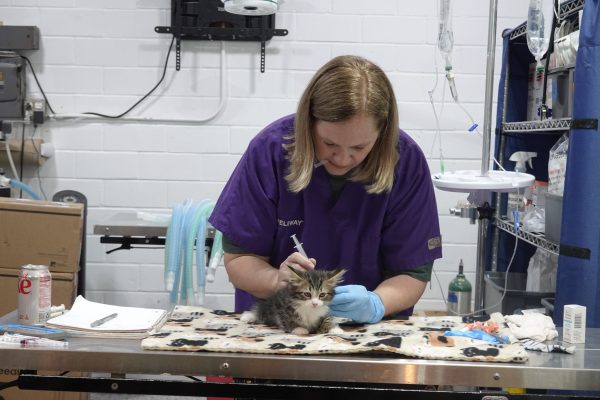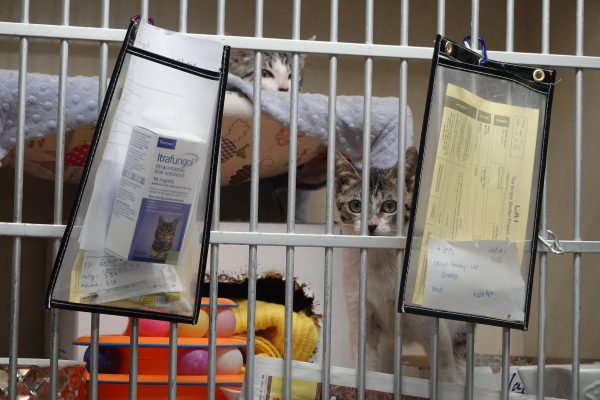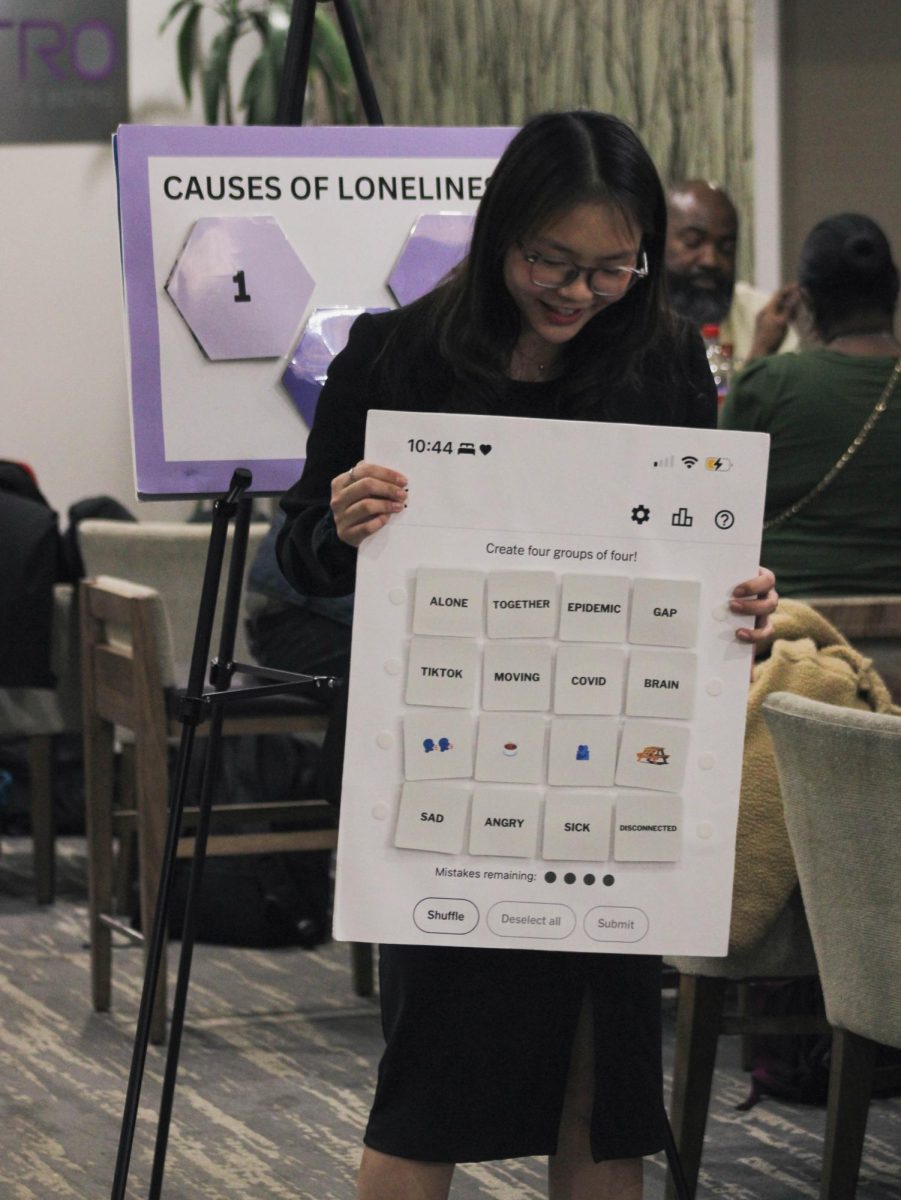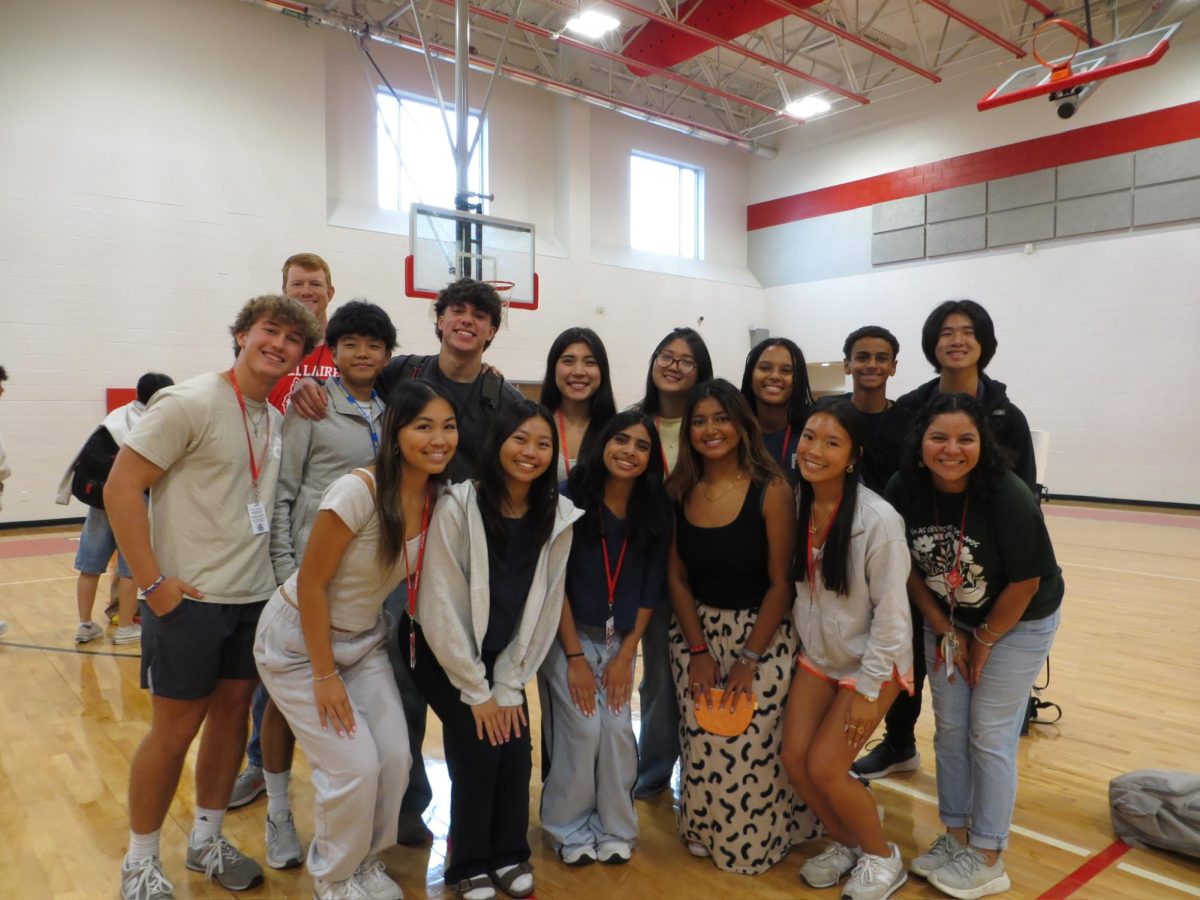Every day, a friendly, all-white fluffball would cautiously stop at her red brick house, perching on the orange-brown stone beside her front door. She would see him eating the food her family provided whenever they pulled into their driveway.
It was during these two years that sophomore Kyla Rocha was first introduced to fostering.
“When I was 7 or 8, the first animal that I remember us fostering was a cat that just showed up at our front door, and [he] would come and eat progressively more and more,” Rocha said. “My mom took him in. She fostered him, and she would take him to [rescue] events until someone adopted him.”
Two years later, Rocha was with her friends when she discovered something that permanently impacted her life.
“I was at my friend’s house, and [we came across] this little kitten in a ditch that somebody had dumped,” Rocha said. “I was like, ‘What are we going to do with this cat? It’s probably going to die.’ My mom came, and she was like, ‘I’ll take it.’ I got really, really attached to him, and we actually ended up keeping him instead of fostering him away. [We named him] Abe.”
Since then, Rocha has fostered 15 cats and dogs in poor condition that her family assisted in nursing back to health.
“We’re fostering a cat [named] Oatmeal,” Rocha said. “He’s blind in one eye, and when we first got him he had an infection in his mouth that made it so it was hard for him to eat. Say he were to find some food [outside], and he wasn’t able to eat it, then he’d probably die of starvation.”
Besides ultimately adopting three foster cats, Rocha said that fostering has enriched her life in other ways.
“One, [foster animals are] great companions. I love all my animals, they’re so awesome,” Rocha said. “Two, when you take them in and you allow other people to foster them, it’s like, ‘I just saved an animal.’”
While Rocha and her family work with the HOPE animal rescue, there are other nearby shelters that are in dire need of families to foster and adopt felines. Jarrad Mears, the director of the BARC Animal Shelter, which is currently at critical capacity, described shelters as “continuously flooded” with one prominent solution to pacify their struggles: fostering.
“Space is a finite resource, and kitten season can prove to be especially challenging,” Mears said. “Fostering frees up space and allows time for rescues to secure a safe haven for these animals once they are at an adoptable age.”
Kitten season, running from April to October, is a particularly crowded and hectic time of the year for shelters. These are the months in which it is more probable for cats to breed and birth kittens, creating the inability for shelters to care for countless motherless, young kittens that need nourishment every few hours.
Difficulty managing kittens during kitten season is not exclusive to BARC. It is a pervasive struggle, spanning Harris County and beyond.
Wolly Kitten Club Director Shannon Von Eiff, said that kitten season can have a significant impact on rescue organizations.

“We’re still seeing kittens being born right now,” Von Eiff said. “We have our last kitten coming in usually about the end of November, so our kitten season is really long [every year]. Mamas usually have two or three litters during one kitten season, so our numbers will go up significantly, probably a 70 to 80 percent increase during that time.”
Von Eiff said it is important for people to foster kittens as they can make a difference in kittens’ lives.
“We cannot operate without fosters,” Von Eiff said. “[In foster homes, kittens] learn how to socialize and how to be kittens. They get far better attention [than in shelters]. Those little bitty kittens that we usually take that can get real sick real fast, fosters can catch [the sicknesses] quickly because they’re so in tune with those kittens. So we catch things very quickly, we can get them medicated, and then they thrive. Fosters are our biggest asset.”

Organization workers understand that not everyone has the ability to foster kittens, but there are other ways to assist animal shelters during this spike in kitten births.
“Some places need you to take animals to adoption events,” Von Eiff said. “You can always contribute financially, help [organizations] with their social media presence [or] drive animals back and forth [from the vet]. There’s a myriad of ways that you can help aside from fostering, and all those ways matter.”
After years of experience, seeing the progress that foster cats have made under the care of Rocha has inspired her.
“[Fostering cats] makes me feel really amazing because I know that we’re getting a cat off the street and saving it,” Rocha said.











Ishani Kaushik • Oct 10, 2024 at 3:56 pm
Amazing story and amazing photos!! Such a great piece!